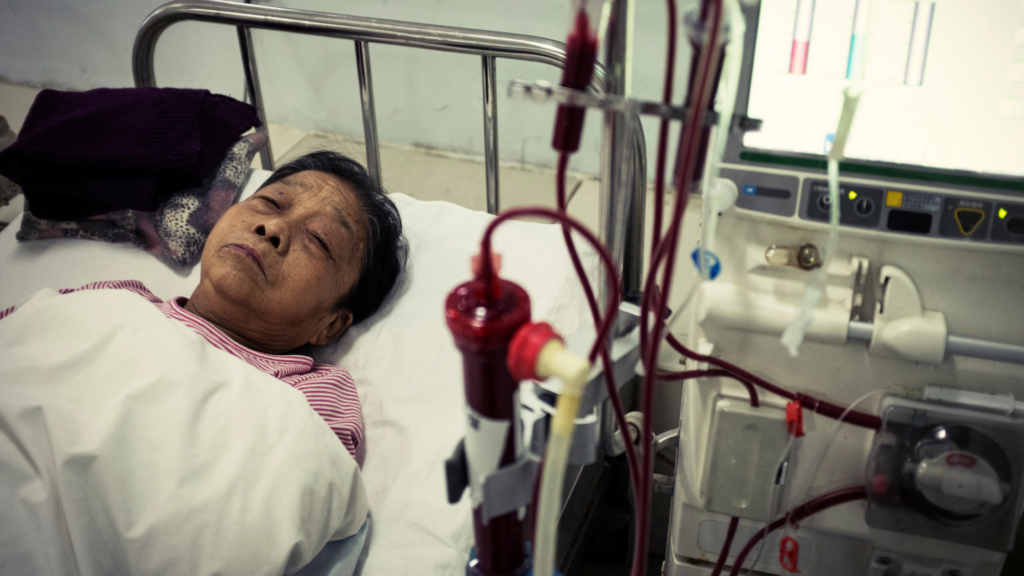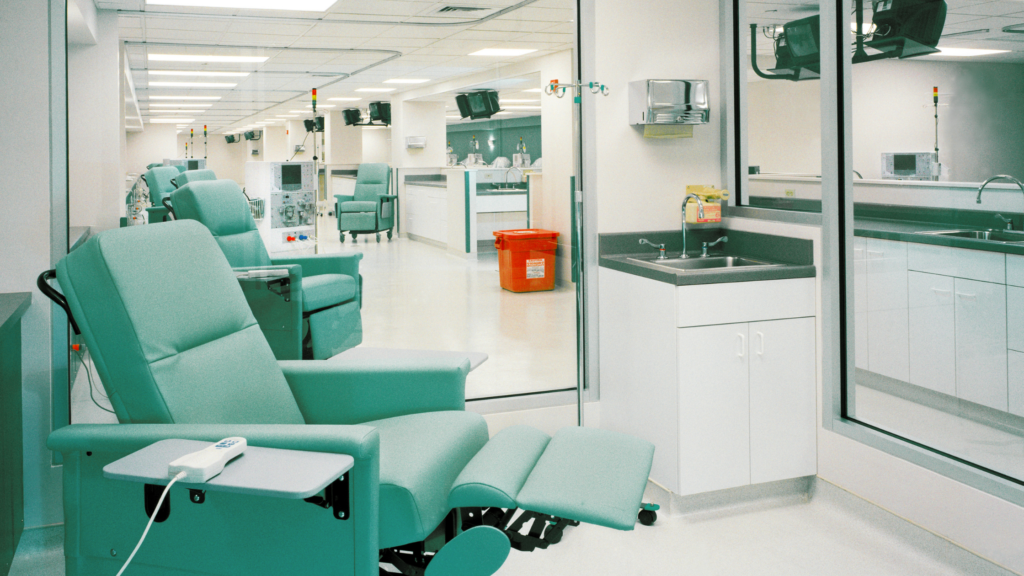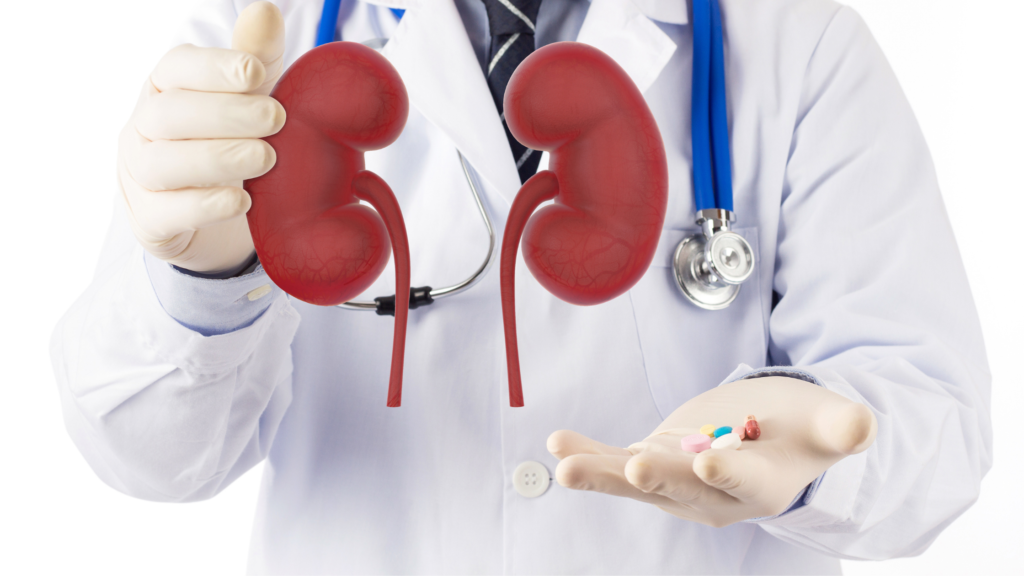No one expects to hear ‘kidney care’ + ‘innovation’ in the same sentence. But the kidneys have a pretty important job in the body – filtering out waste, toxins, and excess fluid from our blood. Damaged kidneys cannot filter blood properly, which leads to other health problems like heart disease and stroke. Treatment for chronic kidney disease (CKD) is pretty expensive, and gets even more expensive if it progresses to kidney failure.
The federal government, states, insurance companies, and even CVS Health recognize this is a problem. This is where health technology startups are stepping in to propose innovative solutions.

Chronic kidney disease (CKD) is a major problem:
In addition to filtering the blood, kidneys also help the body make red blood cells, contribute to bone health, and regulate blood chemicals. They can become damaged over time in people with health issues like diabetes, high blood pressure, obesity, or heart disease. Some people with a family history of kidney disease may also be more likely to develop it. CKD is most common in people 65 years and older, so age is another risk factor.
If caught early enough, kidney disease is treatable through a healthy diet and keeping conditions like diabetes and high blood pressure under control. Unfortunately, many people with early CKD do not feel or notice any symptoms. The only way to know if they have chronic kidney disease is through testing.
The lack of symptoms in early stages is part of what makes CKD such a big problem. The CDC estimates that 37 million US adults have CKD but most are undiagnosed. They further estimate that 40% of people with severe kidney impairment are unaware they have chronic kidney disease. By the time it is detected, a person’s kidney disease may have already gotten much worse. Every 24 hours, 350 people have to start dialysis treatment for kidney failure.


Treatment for kidney disease is extremely expensive:
Treatment for CKD can be expensive. Medicare’s costs for people with CKD were $23,700 per person in 2018. Once a person is in more advanced stages of kidney disease, they may have reached kidney failure. This is also called end stage renal disease (ESRD). Medicare’s costs go up for people with ESRD, and in 2018 they spent $80,000 per person.
There are two options for treating advanced kidney disease, both of which are extremely costly: dialysis and kidney transplant.
Dialysis is a process that removes waste, toxins, and excess fluid from the body. This is done with either a machine or bags of fluid. Hemodialysis is a type of dialysis where an artificial kidney removes waste from the body. It is usually done three times per week in dialysis centers where medical staff monitor the patient. However, there are newer tools that support at-home hemodialysis. Another type of dialysis called peritoneal dialysis involves infusing fluid into the abdomen. Patients can perform this dialysis themselves at home.
The type and location of dialysis treatments cause major cost differences. One year of hemodialysis can cost up to $72,000 versus $53,000 for a year of peritoneal dialysis. People with commercial insurance may be charged double double that amount. One study found commercial insurers paid the DaVita dialysis center chain an average of $148,722 per patient.

The other option for treating end stage renal disease is a kidney transplant. This is where a donor kidney replaces a person’s diseased kidney. Using Medicare claims, one study found the mean cost per patient for a kidney transplant is $65,366.
Looking only at cost, it could be tempting to ask: ‘Why doesn’t everyone just go get a kidney transplant?’ The short answer is there are simply not enough kidneys to go around, and not everyone is a candidate. The longer answer is there may be other ways to prevent someone from getting to this point to begin with. There has never been greater need for kidney care innovation.

Disrupting traditional kidney care aims to save money:
The first place we can see disruption to traditional kidney care is in changes to payment.
Health insurance companies, like Cigna and Humana, are entering into value-based payment arrangements. This is where providers are paid based on patient outcomes. It puts pressure on providers to use effective treatments, not just expensive ones.
CVS Health recently announced a new initiative focused on improving outcomes and containing cost for people with kidney disease. They will initially focus on earlier diagnosis and home dialysis. In the future they plan to invest in new at-home hemodialysis devices.
California made headlines by passing a bill that caps payment to dialysis providers with charity connects that subsidize commercial insurance. There has been recent bad press for dialysis centers due to practices that allegedly increase costs for treatment. In fact, America Renal Associates paid United Healthcare a $32 million settlement for a case alleging they steered patients to higher reimbursement plans by offering premium assistance.
California’s bill would prevent these dialysis centers from charging more than Medicare rates.

Taking a different approach, the Department of Health and Human Services (HHS) and the American Society of Nephrology teamed up to create an accelerator for kidney care innovation. Called KidneyX, the goal is to encourage the private sector to create options that advance kidney treatment. Similar to other efforts like SpaceX, KidneyX is offering prizes for innovation. They hope to promote new ideas in areas like artificial kidneys that are wearable, implantable, or bioengineered. For that particular competition, they plan to award a total of $10 million in prizes.
Another area of kidney care innovation is startups that aim to save payers money. This is done by keeping people with CKD off of dialysis and away from the hospital for as long as possible.

Startups focused on kidney care innovation:
There are a number of startups trying to disrupt the kidney care market, which some value at over $100 billion. Their approaches to kidney care innovation range from predicting risk for further disease, new tests, and integrated care teams.
Cricket Health
Cricket Health was founded in 2015 and is headquartered in San Francisco, CA, and Cambridge, MA. Using predictive analytics, they try to intervene well before kidney failure when treatment is significantly less costly. Their goal is also to improve quality of life and health outcomes. They offer:
- Dedicated care teams of nurses, dietitians, social workers, pharmacists
- Video content
- Online peer support
- Patient mentors
The care team answers questions about kidney disease and treatment options, connects people with community resources, develops a diet plan, and provides wellness coaching. They ensure patients understand treatment options along the trajectory of kidney disease. If the person progresses to kidney failure, they offer education on treatment options.

Cricket Health partners with patients’ doctors to help them delay kidney failure. They see themselves as the provider’s ‘eyes and ears between appointments. They also help providers with negotiating with insurance companies to include additional earnings and expand the provider’s panel of patients.
Cricket Health claims their approach increases patient knowledge and physician satisfaction, and increases use of lower cost dialysis options.
NephroSant
NephroSant describes itself as the end result of many years of research by Stanford and University of California – San Francisco. They focus on ways to predict and prevent the progression of kidney disease. This is through new diagnostic tools for early detection and lifetime monitoring of kidneys.
Their primary product is called QSant™ – a urine-based test for the detection of kidney transplant rejection. The company points out that 15-40% of kidney transplants result in rejection. Also shocking is the fact that 20% of kidney transplants each year are actually re-transplants.
The benefit of their product is it is non-invasive – no needles are required because it tests the person’s urine. This allow patients to test at home. The company also uses artificial intelligence to calculate a risk of rejection score, which they call the Q-Score. The test detects different rejection types and can be used on a variety of patients such as children, pregnant people, and multi-organ transplant recipients.
Somatus
Somatus was founded in 2016 and is headquartered in McLean, Virginia. They offer four key services to improve kidney care:
1: Field-Based Nursing: Somatus has a team of clinicians who are experts in renal care. They offer personalized care plans, health coaching, and care coordination. One differentiator is they also offer in-home assessments and medication reconciliation. Being able to go into the home is an advantage since they get better insight into barriers to care.
2: Dialysis Provisioning: They advise on which approach to dialysis would be best to manage cost and quality. This includes options like home dialysis, inpatient dialysis, in-center dialysis, and transplant referral consulting. They do also offer dialysis directly both inpatient and outpatient in Virginia.
3: Network Engagement: Somatus can help health plans manage their network around kidney care. They offer services such as network development, quality performance optimization, value-based contracting, and access to community resources.
4: RenalIQ Technology: This is their technology platform that provides advanced predictive analytics and risk stratification. This allows them to identify the most at-risk patients to focus on and intervene.

Somatus claims a 42% reduction in length of stay compared to the national average for the patients they care for. They also report a 96% rate of enrolling patients into end stage kidney disease programs. Some of their partnerships include Humana, Blue Cross Blue Shield of Tennessee, and Blue Cross Blue Shield of Illinois.
Strive Health
Based in Denver, Colorado, Strive Health built their care model around what they call the Kidney Hero™ team. This is a specialized clinical team led by Nurse Practitioners. It also includes RN case managers, social workers, dietitians, pharmacists, and care coordinators. The team acts as a partner to the person’s nephrologist and PCP.
Strive Health also has a predictive analytics platform that identifies and risk stratifies patients. This information is fed to the care management platform so the care team can act on the insights. The Kidney Hero team connects with patients in doctors offices, hospitals, or at home. They may also connect with people at Strive Care Centers which provide home dialysis training, education, and CKD care management.

The Kidney Hero Team works with local providers to manage and engage people with kidney disease. If the disease progresses to end stage renal disease, they facilitate transition to kidney replacement therapy. That could be a transplant, home dialysis, or a conservative care approach.
Strive Health claims to have tripled the adoption of home dialysis adoption among the patients they manage. They also claim to have reduced hospitalizations by 50%.

Key Takeaways:
Chronic kidney disease is a widespread health issue that gets incredibly expensive to treat at later stages. The best option is to detect and treat it early. But that is a challenge since there are so few symptoms until it is too late. Governments and health insurance companies are taking steps to curtail costs in this area.
But startups may offer the most hope by finding ways to detect kidney disease early, better manage patients through the process, and support treatment adjustments. The next several years will likely see more changes in this space given how common kidney disease is.






0 Comments